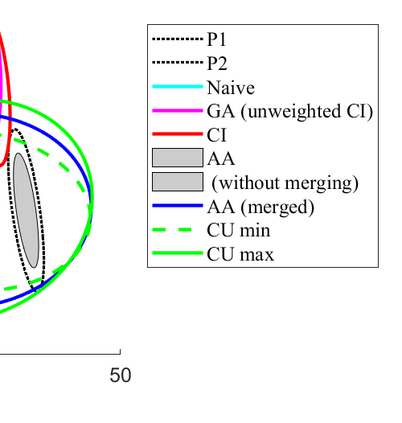Finite mixture such as the Gaussian mixture is a flexible and powerful probabilistic modeling tool for representing the multimodal distribution widely involved in many estimation and learning problems. The core of it is representing the target distribution by the arithmetic average (AA) of a finite number of sub-distributions which constitute the mixture. The AA fusion has demonstrated compelling performance for both single-sensor and multi-sensor estimator design. In this paper, some statistic and information-theoretic results are given on the AA fusion approach, including its covariance consistency, mean square error, mode-preservation capacity, mixture information divergence and principles for fusing/mixing weight design. In particular, based on the concept of conservative fusion, the relationship of the AA fusion with the existing conservative fusion approaches such as covariance union and covariance intersection is exposed. The best fit of the mixture is formulated as a max-min problem, proving the sub-optimality of the AA fusion. Linear Gaussian models are considered for illustration and simulation comparison.
翻译:Gausian混合物等极量混合物是一种灵活而有力的概率模型工具,用以代表广泛涉及许多估计和学习问题的多式联运分布,其核心代表了构成混合物的少量分分配量的算术平均数(AA)的目标分布。AA混合物表明单传感器和多传感器估计器设计具有令人信服的性能。在本文中,AA混合物方法的一些统计和信息理论结果,包括其共变一致性、平均平方差、模式保存能力、混合信息差异以及混合/混合重量设计的原则。特别是,根据保守的混合概念,AA混合物与现有的稳妥混合方法(如共变结合和共变交点)之间的关系暴露了。该混合物的最合适性被表述为最大量问题,证明了AA混合物的次优化性。线性高斯模型被考虑用于说明和模拟比较。







